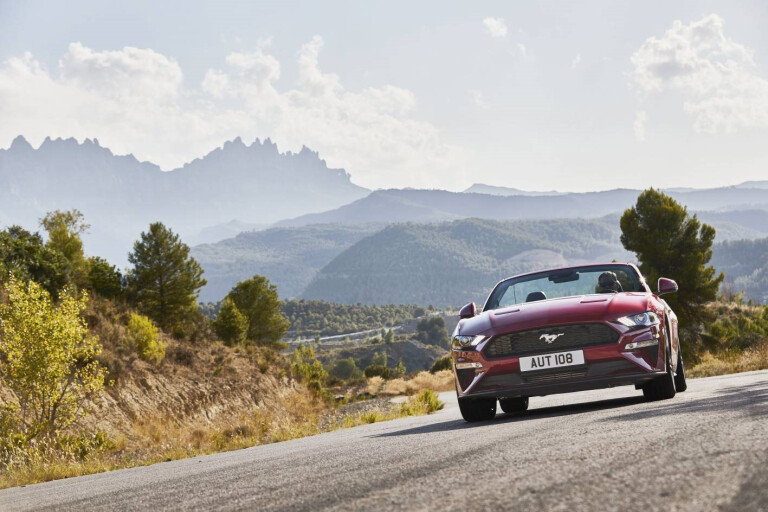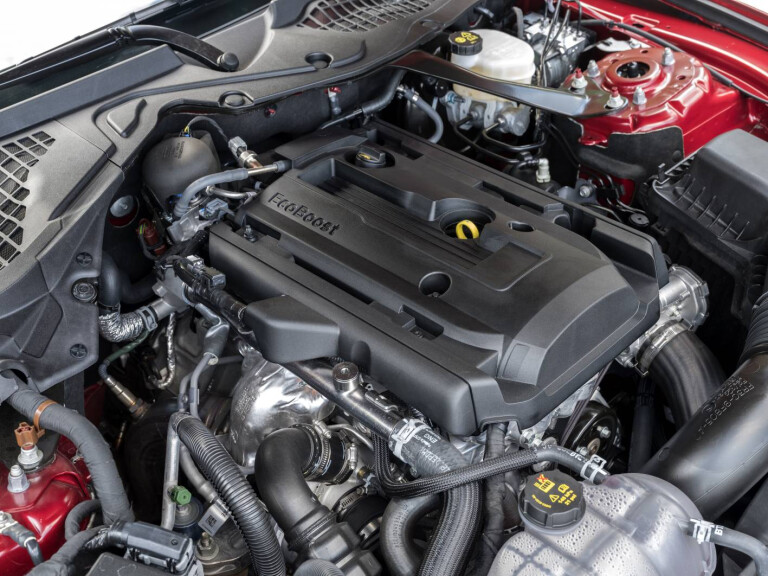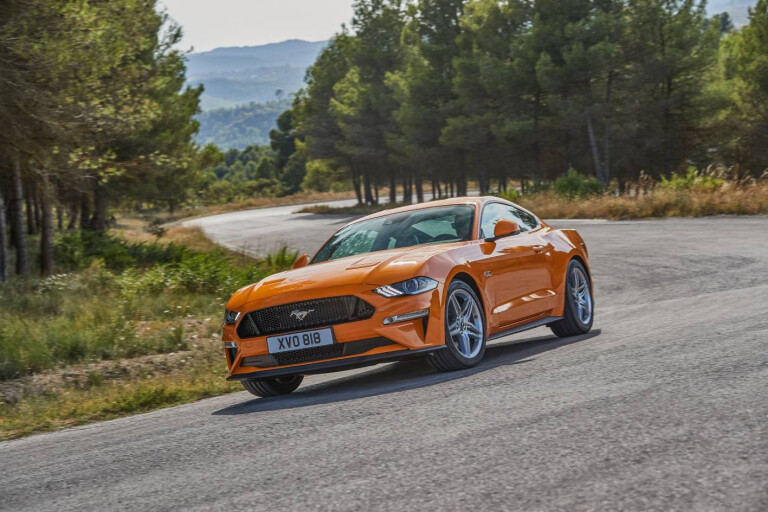
The V8-powered GT might currently be the king of the Ford Mustang castle, but its turbocharged stablemate is set to come out swinging in 2020.
The Mustang is a surprise sales juggernaut for Ford, and it's the second-best seller in Australia for Ford behind the Ranger.
It has few natural enemies outside cars like the limited-run Chevrolet Camaro, Kia’s four-door Stinger, the ageing Nissan 370Z and the much smaller and less powerful Toyota 86/Subaru BRZ pair.
When it comes to powertrains, the 2.3-litre four-cylinder turbocharged engine aboard the Ford Mustang EcoBoost currently makes 224kW and 441Nm of torque, while the top-dog 5.0-litre V8 GT makes 339kW and 556Nm.
VIN update paperwork lodged by Ford with the National Highway Traffic Safety Administration in the US, however, shines a light on the potential for the Mustang EcoBoost to be, erm, boosted.

The 2.3-litre four-cylinder (above) is quite a popular engine in the Ford family at the moment. Not only is it used in the Mustang, but it’s also used in the US version if the Australian-designed T6 Ranger, which has just gone on sale in the 'States.
It’s also used in the Focus RS rocketship hatch, where it makes a prodigious 257kW and 440Nm of torque.
The NHTSA paperwork shows Ford has listed a new version of the EcoBoost engine with the government agency for 2020, but its power output is currently marked as TBD (To Be Determined). Could this indicate that a more powerful version is on the cards?
Ford insiders are saying yes, according to overseas reports – and that’s because the Mustang’s arch rival, the Chevrolet Camaro, is sold in the US with a V6 that offers around 250kW. Ford dropped the V6 version of the Mustang – which never made it to Australia - in 2018.
We suspect that the hyper-tuned Focus RS’s powerplant might not be suitable for the Mustang, given the smaller cooling apertures of the Mustang when compared to the front of the Focus. The head of the RS program has also suggested previously that the RS’s tune is at about the limit of that engine’s performance envelope, as well.
However, the use of the 2.3-litre petrol engine in a commercial application like the Ranger means that more money can potentially be spent on developing it further for both reliability and power gains.
Where does that leave the EcoBoost? Ford isn’t saying anything, but the 2019 Ford Mustang EcoBoost missed out on the meaty mechanical updates bestowed on the GT, so it’s next in line for a freshen-up, potentially later this year.
We’d suggest that a 250kW, 450Nm version of the Mustang EcoBoost sounds about right. The power-up would not require an update to the ten-speed auto, while a heavier-duty clutch for the six-speed manual would sort that out.
It may require a front brake upgrade, but the larger rotors from the GT would do the trick nicely, and will still fit under the EcoBoost’s stock 19-inch rims.
An expanded presence in the Supercars championship potentially points to more marketing spend on the surprisingly successful Mustang, too.
Ford Australia isn’t saying anything yet, but watch this space.

COMMENTS